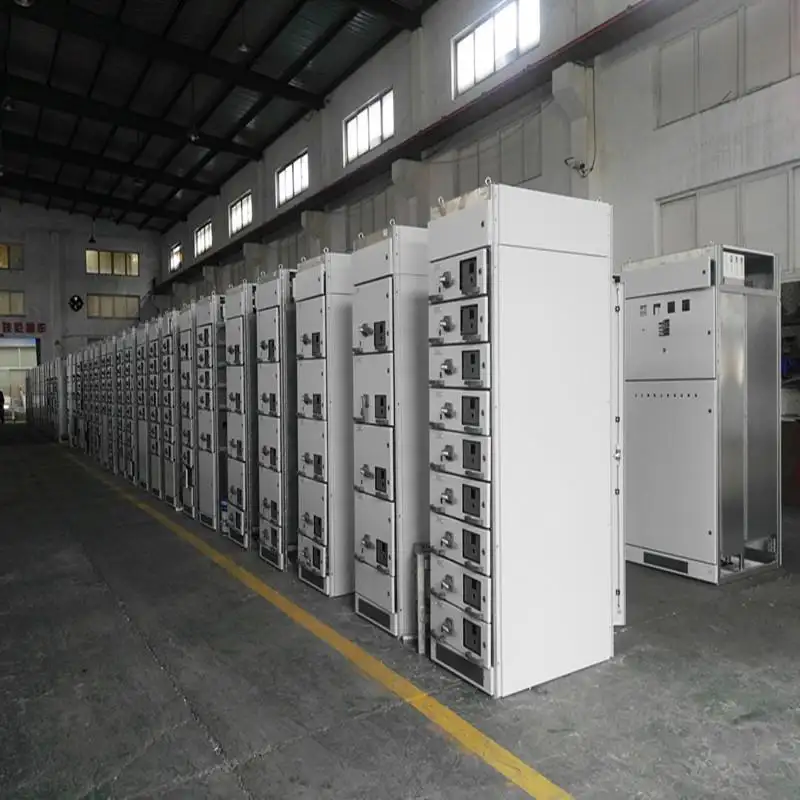"Made in China" plays an important role in the global industrial chain once again. The new pattern of dual-cycle development creates important conditions for low-voltage electrical appliance enterprises to export and release domestic demand. China's low-voltage electrical appliance companies have overcome difficulties such as rising raw material prices and transportation costs to achieve export growth in the first two months of this year.
Zhang Sen, secretary general of low-voltage electrical apparatus Branch of China Chamber of Commerce for Import and Export of Mechanical and Electrical Products, predicted that in the first quarter of this year, China's total low-voltage electrical apparatus exports will reach about $5 billion, up about 5% year on year; The total exports of low-voltage appliances for the whole year will reach about 25 billion US dollars, up about 10% year on year.
Corporate profit margins are shrinking
Statistics from the General Administration of Customs show that in the first two months of 2022, China's exports of low-voltage electrical appliances totaled us $3.51 billion, up 7.5% year on year. China's annual exports of low-voltage electrical appliances hit a record high of $22.77 billion last year, up 31.1 percent year on year.

China's exports of low-voltage electrical appliances to emerging markets have increased. In 2021, China exported 7.78 billion US dollars of low-voltage electrical appliances to countries along the Belt and Road, up 28.3% year on year, accounting for 34.2% of China's total export of low-voltage electrical appliances. In 2021, China exported low-voltage electrical appliances to RCEP countries to US $5.45 billion, up 23.8% year on year, accounting for 20.6% of China's total export of low-voltage electrical appliances.
By product category, connectors with operating voltage less than 36 volts are still China's largest single export of low-voltage electrical appliances, with exports of about $6.45 billion last year, up 26.4% year on year, according to data.
Although the export of low-voltage electrical appliances in China has achieved growth, the export of low-voltage electrical appliances is still facing risks and challenges. Soaring raw material prices, soaring international freight rates and difficulties in booking container space continue to compress corporate profit margins.
Since the outbreak, China's low-voltage electrical appliance enterprises have faced business expansion and supply chain challenges. "The price fluctuation of raw materials has brought some difficulties to the operation of enterprises, among which the price change of upstream copper, iron, silver, plastic and other bulk raw materials as well as electronic components directly affects the purchase cost." Zhang Sen said. As of February 21, 2022, the price of rebar rose to 4990 yuan/ton, up more than 15% year on year; In February 2022, the copper price as a whole maintained a narrow range shock state, the spot price was 71,620 yuan/ton, up more than 35% year on year. In addition, steel, plastic and other raw materials prices also affect low-voltage appliances and other enterprises, enterprises are generally expected to continue to shrink profits.
Container, sea freight continues high, enterprise transportation cost rises. Affected by the epidemic, global container freight rates continue to rise. In the middle of February, the latest composite index of China's export container freight rate was 3500.19, which continued to rise for several periods and showed no signs of decline. The tension and scarcity of containers also led to the endless rise of towing fees, loading and lifting fees, dropping fees, withholding fees and pre-loading fees, and the instability of the shipping schedule brought extra fees such as overdue container fees, demurrage fees and allocation fees. All these bring difficulties to the export of low-voltage electrical equipment enterprises.
Multiple measures to break through the problem of profitability

In the face of many challenges, How to break through difficulties to improve the profit margin of Chinese low-voltage electrical enterprises. In this regard, Zhang Sen suggested relevant departments to vigorously promote the high-quality development of overseas warehouses, increase tax relief and credit support, increase support and subsidies for enterprises "replacing labor by machines", introduce dock management regulation policies, and provide subsidies for international transportation costs.
Overseas warehouse plays an important role in promoting the steady development of foreign trade, cultivating new competitive advantages and maintaining the stability and smooth flow of international supply chain. "The construction of overseas warehouses should be further strengthened, the layout of overseas warehouses should be accelerated, and the prominent contradictions and problems in the global layout of overseas warehouses, the construction of standard systems and the development of leading enterprises should be actively coordinated and solved." Zhang Sen said.
In increasing trade export enterprise tax breaks and financial support, "to help good prestige, high degree of specialization, high level of technology enterprises get warranty support letter, we will further expand coverage for short-term export credit insurance, as a whole the allocation of resources, a targeted professional services to help enterprises to strengthen risk management for export. At the same time, we will step up monetary and financial policies to support the real economy and help enterprises, especially micro, small and medium-sized enterprises, tide over difficulties." Zhang Sen said.
The backflow of orders causes labor difficulties in some enterprises, and enterprises have to buy machines to replace labor. However, the high price of equipment increases the operating costs of enterprises with diluted profits. In this regard, Zhang Sen suggested that the state should increase the enterprise "machine instead of labor" support and subsidies, reduce enterprise operating costs.
Freight rates continue to rise, and low-voltage electrical manufacturers say some terminals even appear arbitrary charges. In this regard, Zhang Sen suggested that, on the one hand, we should continue to implement the relevant measures to stabilize foreign trade and guide international liner companies to increase the supply of shipping capacity for the export routes of the Chinese mainland; On the other hand, we should guide Chinese enterprises to strengthen the layout of overseas port operations. In addition, corresponding policies should be introduced to subsidize the international transportation costs of enterprises.

